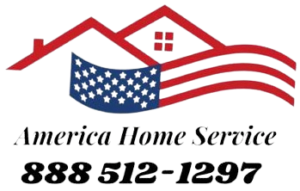-
Table of Contents
- Chimney Maintenance, Repair, and Cleaning
- Importance of Regular Chimney Inspections
- Chimney Repair: Addressing Common Issues
- Effective Chimney Cleaning and Creosote Removal
- Additional Home Services
- FAQ: Chimney Maintenance and Repair
- How often should I have my chimney inspected?
- What are the signs that my chimney needs repair?
- Can I clean my chimney myself?
- What is creosote, and why is it dangerous?
- Conclusion
<meta name=”description” content=”Learn about chimney maintenance, repair, and cleaning to ensure fireplace safety. Discover tips for creosote removal and the importance of regular chimney inspections.”>
Ensure your home’s safety and efficiency by addressing potential chimney liner issues. Look for signs such as visible cracks, rust, or poor draft performance. If you’re experiencing any of these, it might be time for a replacement. [Not sure about your chimney liner? Get a professional evaluation today.](#)
Chimney Maintenance, Repair, and Cleaning

Ensuring the safety and efficiency of your fireplace begins with regular chimney maintenance. A well-maintained chimney not only enhances the longevity of your fireplace but also ensures the safety of your home. This article delves into the essentials of chimney maintenance, repair, and cleaning, providing you with the knowledge to keep your chimney in top condition.
Importance of Regular Chimney Inspections
Regular chimney inspections are crucial for identifying potential issues before they become major problems. Inspections help in detecting structural damage, blockages, and the buildup of creosote—a highly flammable substance that can lead to chimney fires. It is recommended to have your chimney inspected at least once a year, especially before the start of the winter season.
Chimney Repair: Addressing Common Issues
Over time, chimneys can suffer from wear and tear, leading to issues such as cracked bricks, damaged mortar, and faulty flue liners. Timely chimney repair is essential to prevent these problems from escalating. Repairing cracks and leaks not only improves the efficiency of your chimney but also prevents water damage and structural deterioration.
Effective Chimney Cleaning and Creosote Removal
One of the most critical aspects of chimney maintenance is creosote removal. Creosote is a byproduct of burning wood and can accumulate on the walls of your chimney. If not removed regularly, it poses a significant fire hazard. Professional chimney cleaning services ensure thorough removal of creosote and other debris, enhancing fireplace safety and performance.
Additional Home Services
In addition to chimney services, consider exploring our air duct cleaning and dryer vent cleaning services. These services help improve indoor air quality and reduce the risk of fire hazards in your home.
FAQ: Chimney Maintenance and Repair
How often should I have my chimney inspected?
It is recommended to have your chimney inspected at least once a year, preferably before the winter season begins.
What are the signs that my chimney needs repair?
Common signs include visible cracks, water leaks, and unusual odors. If you notice any of these, it’s time to schedule a chimney repair.
Can I clean my chimney myself?
While some minor cleaning can be done by homeowners, professional chimney cleaning is recommended for thorough creosote removal and safety assurance.
What is creosote, and why is it dangerous?
Creosote is a flammable byproduct of burning wood. It can accumulate in your chimney and increase the risk of chimney fires if not removed regularly.
Conclusion
Regular chimney maintenance, including inspections, repairs, and cleaning, is essential for ensuring the safety and efficiency of your fireplace. By addressing issues promptly and removing creosote buildup, you can enjoy a warm and safe home environment. For professional assistance, explore our comprehensive range of services, including chimney repair, air duct cleaning, and more.





